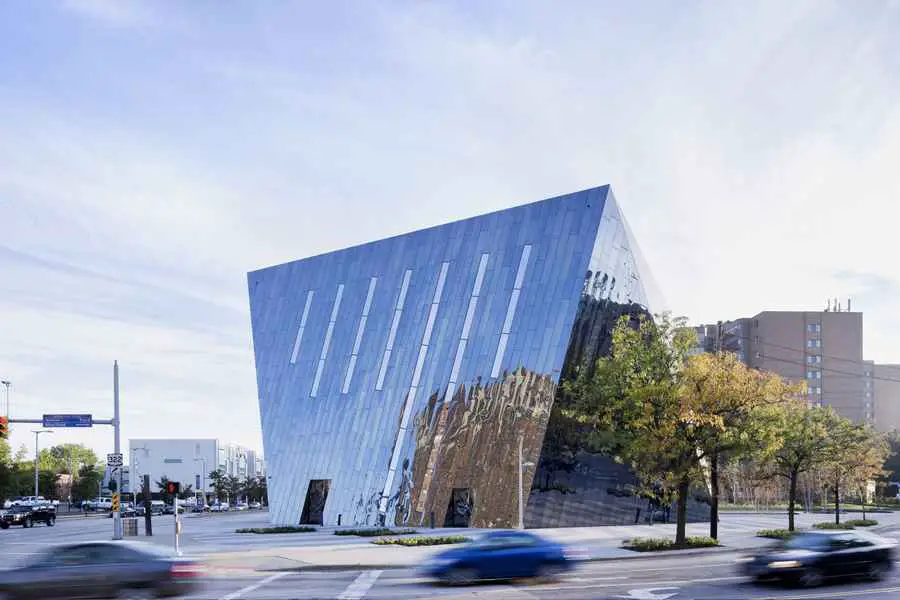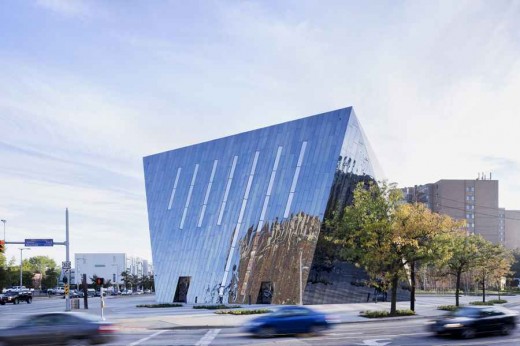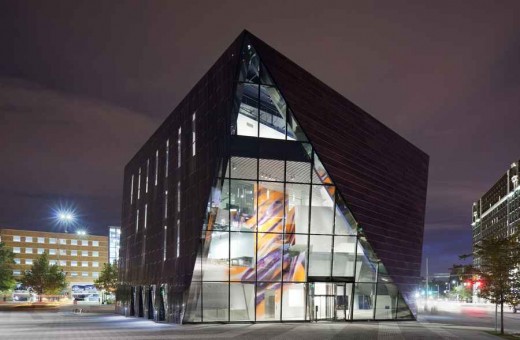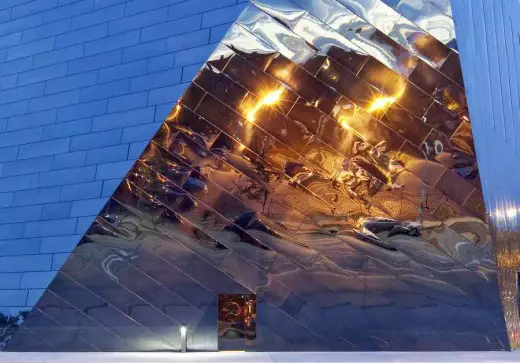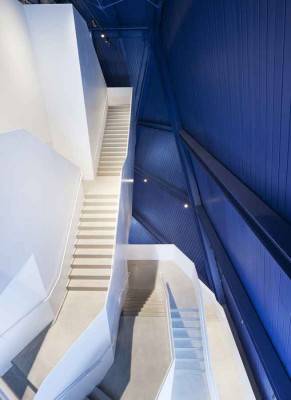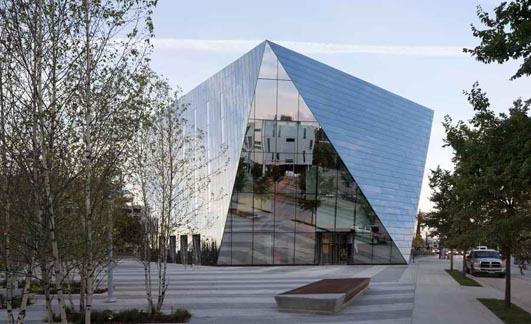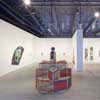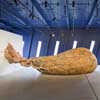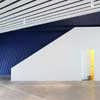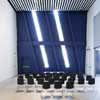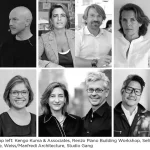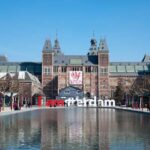Museum of Contemporary Art Cleveland, MOCA building project images, Foreign Office Architect US design picture, FOA news
Museum of Contemporary Art Cleveland : MOCA
Ohio Building design by Farshid Moussavi Architects
Apr 15, 2014 – new larger photos added to this page
Museum of Contemporary Art Cleveland News
Shortlisted for Design Museum Awards
MOCA Cleveland Building
Design Museum Architecture Award : shortlisted for the Architecture category, 11 Apr 2013
The Design Museum announces the seven category winners for the annual Designs of the Year Awards. The awards celebrate the best of international design from the last 12 months. The overall winner for the Design of The Year 2013 will be announced on Wednesday 16 April.
16 Oct 2012
Museum of Contemporary Art Cleveland Building
MOCA – Museum of Contemporary Art Cleveland – Opening News
Design: Farshid Moussavi / Foreign Office Architects (FOA)
Cleveland’s new Museum of Contemporary Art by Farshid Moussavi
Location: Cleveland, northern Ohio
Address: 11400 Euclid Ave, Cleveland, OH 44106, United States
Phone: +1 216-421-8671
The Museum of Contemporary Art, Cleveland
MOCA Cleveland is a 34,000 ft2 non-collecting contemporary art museum designed to serve as a catalyst for creativity and growth in a cosmopolitan Cleveland neighborhood, which is home to one of the country’s largest concentrations of cultural, educational and medical institutions. Because MOCA is a non-collecting institution – one of the relatively few such contemporary art museums in the country – its new building does not need to accommodate collection galleries. Flexibility is key to enable the museum to display works in a great variety of media and genres.
The four-story building, which anchors the Uptown district, liberates space for a plaza and rises 60 feet from a hexagonal base to a square top, where the primary exhibition space is located. All four floors contain areas for either exhibitions or public programs. Located on the corner of its triangular site, the building is designed with entrances on all its sides to allow it to open along its entire perimeter and be used in many different ways.
Clad primarily in mirror-finish black stainless steel, the building envelope reflects its urban surroundings, changing in appearance with differences in light and weather. Three of the building’s six facets, one of them clad in transparent glass, flank a public plaza which is to serve as a public gathering place and to link MOCA to Uptown attractions and amenities, including the expanded Cleveland Institute of Art, and new commercial space and residential units.
Upon entering the building, visitors will find themselves in an atrium where they can see the dynamic shape and structure of the building as it rises. This space leads to MOCA’s lobby, café and shop, and to a double-height multi-purpose room for public programs and events.
From there, visitors may take MOCA’s grand staircase, a dominant architectural feature of the building, to the upper floors. On the top floor the 6,000-square-foot gallery space has no fixed dividing walls, allow¬ing for a variety of configurations. This floor also contains a gallery designed for new media work and a Lounge, which overlooks the plaza and Uptown.
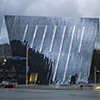
photo : Foreign Office Architects
The Museum of Contemporary Art, Cleveland – Building Information
Construction budget: $18.7 million
Area: 34,000 ft2
Project team:
Design Architect: Farshid Moussavi Architecture (until June 2011 FOA)
Executive Architect: Westlake Reed Leskosky
Engineering Services: Westlake Reed Leskosky
Facade Engineering: ARUP Facades
Museum of Contemporary Art Cleveland Building images / information from Farshid Moussavi
MOCA Hosts Three-day Opening Weekend Festivities – Art & Architecture Celebration
The highly anticipated opening of the new Museum of Contemporary Art Cleveland (MOCA) featured three days of celebration in October. This was designed to showcase the iconic building by architect Farshid Moussavi, the art of our times, and the versatility of MOCA’s exciting new home at the corner of Euclid Avenue and Mayfield Road in the new Uptown neighborhood. Honorary chairs for the opening weekend festivities were Agnes Gund, Donna and Stewart Kohl, Toby Devan Lewis and Scott Mueller.
Designed by London-based Farshid Moussavi of Farshid Moussavi Architecture, formerly with Foreign Office Architects, MOCA’s iconic building sits at the gateway to the emerging Uptown district in University Circle, a cultural hub of the city.
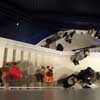
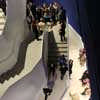
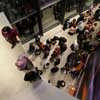
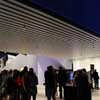
photos : Ann Onusko, Design Culture Cleveland
About Farshid Moussavi Architecture (FMA)
Farshid Moussavi Architecture (FMA) was founded by internationally acclaimed architect and Harvard Professor Farshid Moussavi as a London-based practice dedicated to architecture, urban design and landscape architecture. Moussavi was previously co-founder and co-principal of Foreign Office Architects (FOA) where she co-authored the design for the award-winning Yokohama International Ferry Terminal in Japan and was part of the United Architects team who were finalists for the Ground Zero competition, as well as the team that designed the London 2012 Olympics Masterplan.
At FOA she completed a wide range of other international projects including the John Lewis Complex in Leicester, England; the South-East Coastal Park in Barcelona, Spain; and the Meydan Retail Complex in Istanbul, Turkey; and represented Britain at the 8th Venice Architecture Biennale in 2002.
First Exhibition at MOCA Cleveland
Inside Out and From the Ground Up (October 8, 2012 – February 24, 2013)
Jul 27, 2010
MOCA Cleveland Building News
Museum Of Contemporary Art Cleveland Releases Design By Foreign Office Architects For Innovative New Building
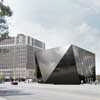
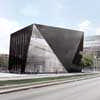
image : Foreign Office Architects
Project is cornerstone of Cleveland’s emerging Uptown
The Museum of Contemporary Art Cleveland (MOCA) today released the design for its new facility, following its presentation and approval at a meeting of the City Planning Commission. The project is designed by the internationally acclaimed firm Foreign Office Architects (FOA), London. The Museum anticipates that it will break ground for the $26.3 million project in fall/winter 2010.
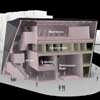
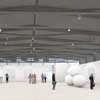
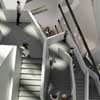
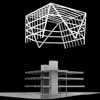
images : Foreign Office Architects
The nearly 34,000-square-foot, four-story structure is FOA’s first major building in the United States and its first museum. It will provide MOCA with street presence for the first time in its forty-plus-year history, and will enable it to present a diversity of innovative exhibitions and programs, while appealing to both current and new audiences. At the same time, it will give the city of Cleveland and its cultural community a signature building for contemporary art and ideas.
Located at the intersection of Euclid Avenue and Mayfield Road, the new MOCA is a flagship project of Cleveland’s emerging Uptown district, a major urban-revitalization project undertaken by Case Western Reserve University; developer MRN, Ltd.; and other institutions in the University Circle neighborhood (see page 4). The Museum will serve as a catalyst for creativity and growth in the area—which is home to one of the country’s largest concentrations of cultural, educational, and medical institutions—with greatly expanded educational and public programs, as well as imaginative collaborations with neighboring organizations and cultural partners.
MOCA Director Jill Snyder says, “The Museum of Contemporary Art Cleveland is elated that the design for its new building has been approved by the City Planning Commission. This represents an endorsement of FOA’s inspired building-design and a recognition of the critical importance of MOCA to the cultural life of the city.
FOA’s design for our building is the perfect expression of our program—one that will not only enable us to operate at the highest level, but that will also be beautiful, intriguing, and sensitive to our urban surroundings and community. The Museum’s ability to realize this project during a period of economic instability is a clear testament to the vision and dedication of MOCA’s Board leadership and community funders.”
Farshid Moussavi, principal of FOA,adds, “As FOA’s first museum and first U.S. commission, this is an especially meaningful and inspirational project for us. Museums today are not just homes for art, but serve multiple functions and host a variety of activities. Our design for MOCA Cleveland aims to provide visitors with a museum that is a dynamic public space in which to experience contemporary art in its infinite manifestations.”
In addition to Foreign Office Architects, the design team for the new Museum includes executive architects Westlake Reed Leskosky, headquartered in Cleveland and designers of more than fifty cultural buildings throughout the United States.
Building Design
The new MOCA, which will be forty-four percent larger than the Museum’s current, leased facility, will demonstrate that a museum expansion need not be large in scale to be ambitious in all respects. Devised for both environmental and fiscal sustainability, the design for the four-story building is at once technically inventive, visually stunning, and highly practical.
FOA has responded ingeniously to the project’s roughly triangular site by designing a building with a hexagonal base that, with imperceptible changes in the shape of each story, rises to a square roof. Viewed from the exterior, the building will appear as an inventive massing of six geometric facets, some flat, others sloping at various angles, all coming together to create a powerful abstract form.
Clad primarily in mirror-finish black Rimex stainless steel, the façade of the new MOCA will reflect its urban surroundings, changing in appearance with differences in light and weather. Window glazing will be tinted to assimilate with the reflective skin so that during the day the building will read as a unified volume, while at night interior lights will create a dynamic pattern on the dark surface.
Three of the building’s six facets, one of them clad in transparent glass, will flank a public plaza. This will provide a public gathering place and also serve as MOCA’s “front yard,” and will be the setting for seasonal programming. From here, visitors and passersby may look through the transparent facet, site of the Museum entrance, into the ground floor, a space intended for socializing and for civic and cultural events.
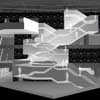


images : Foreign Office Architects
While the building’s dark exterior will offer almost no hint of the interior massing and structure, the experience inside will be notably transparent. Upon entering MOCA, visitors will find themselves in an atrium from which they may visually grasp the dynamic shape and structure of the building as it rises.
This space will lead in turn to the Museum’s lobby, café, and shop, and to a double-height multi-purpose room that will house public programs and other events. From here, visitors may take the Museum’s staircase—itself a monumental sculptural object—or an elevator to the upper floors.
Because MOCA is a non-collecting institution—one of the few such contemporary art museums in the country—its new building does not need to accommodate collection galleries. In order to achieve maximum flexibility for the museum’s diverse exhibitions, the main gallery has been sited at the top of the building. There it will be structurally unencumbered, needing only to hold the lightweight roof, the underside of which will be fully visible from the gallery.
Moveable walls will enable the 6,000-square-foot space to be divided into a variety of configurations. This floor will also contain a gallery designed specifically for new-media work and a lounge with a view of the city, where visitors can relax, reflect on what they have seen, and read about the exhibitions.
Ms. Snyder notes, “As Cleveland’s only museum of contemporary art, MOCA is committed to presenting exhibitions that break new ground, showing the work of emerging artists from across the globe as well as from our own region. Flexibility is key to a program that, like ours, embraces aesthetic, conceptual, and cultural diversity, and displays works in a great variety of mediums and genres. We are thrilled with the gallery space planned for the new Museum.”
While the main exhibition gallery is on the top floor, all four floors of the Museum contain space for either exhibitions or public programs, with the second and third floors combining public and “back of house” functions.
The second floor, for example, will house both exhibition workshops and a 1,500-square-foot public gallery, to be used for more intimately scaled exhibitions; consonant with the openness that is characteristic of the building’s interior, visitors approaching this gallery by stair will also be able to glimpse the workshops. The third floor, home to MOCA’s administrative offices, will also include spaces for classes, lectures, and other educational programs.
In keeping with the ways in which contemporary visitors engage with art, the new building will have wi-fi throughout, enabling the use of wireless devices for on-demand learning. MOCA anticipates that the building will receive LEED silver accreditation.
MOCA – Museum of Contemporary Art Cleveland images / information from Foreign Office Architects
Location: Euclid Avenue, Mayfield Road, Cleveland, USA
MOCA Cleveland Background Information
Foreign Office Architects
Founded in London in 1993, Foreign Office Architects has emerged as one of the most innovative and creative design firms working today, integrating architecture, urban design, and landscape architecture in a wide range of projects internationally.
The project that established the practice’s reputation was the Yokohama Port Terminal in Japan (2002), an imaginative hybrid of non-Cartesian industrial infrastructure and versatile social functionality that architects and critics have called one of the most influential works of architecture of the last decade. Since then, FOA has amassed a diverse portfolio of built works around the world, ranging from transportation facilities to social housing projects.
Over the years, FOA has won several prestigious competitions and commissions, including the BBC Music Box, for the network’s White City complex, in London; and it was selected as part of the United Architects team to submit a design for the World Trade Center site, in New York, in the aftermath of the September 11 attack. In 2002, the practice was selected to represent Great Britain at the 8th Venice Architecture Biennale.
Other completed projects by FOA include the John Lewis Department Store and Cineplex in Leicester, England; Carabanchel Social Housing in Madrid, Spain; the South-East Coastal Park, Barcelona, Spain; the Meydan Retail Complex and Multiplex, in Istanbul; the Spanish Pavilion at the 2005 International Expo in Aichi, Japan; La Rioja Technology Transfer Centre, in Logroño, Spain; and the master plan and infrastructure for the London 2012 Olympic Park.
Museum of Contemporary Art Cleveland
Founded in 1968, the Museum of Contemporary Art Cleveland, a leading force in the cultural life of Northeast Ohio, is recognized nationally and internationally for its vital and creative exhibitions and public programs. These strive to challenge, inspire, and teach a wide range of audiences.
Through eight-to-ten exhibitions a year, all accompanied by public and education programs, and many also by scholarly catalogues, the Museum brings the work and ideas of a diversity of national and international artists to its audiences. MOCA’s critically acclaimed exhibitions have included The Teacher and the Student: Charles Rosenthal and Ilya Kabakov (2004), Yoshitomo Nara (2004), All Digital (2006), Diana Cooper (2008), Sam Taylor-Wood (2008), Hugging and Wrestling: Contemporary Israeli Photography and Video (2009), and Marilyn Minter: Orange Crush(2010).
From 1968 to 1990, MOCA rented modest quarters in University Circle, and from 1990 to the present it has rented second-story space from the Cleveland Play House, where it has been virtually invisible to passersby. Today, as it prepares to begin work on its new building, MOCA looks forward to welcoming both established and new audiences to its exciting new space in University Circle.
For additional information: www.mocacleveland.org
Uptown Initiative
Undertaken in 2008 by Case Western Reserve University, in cooperation with neighboring University Circle institutions and the developer MRN Ltd., Cleveland’s emerging Uptown district will add an urban center to University Circle and the surrounding neighborhoods.
The eight-acre district is anchored by the new MOCA and the expanded Cleveland Institute of Art (designed by Burt, Hill with MVRDV), and will also provide new commercial space and residential units, to be designed by Stanley Saitowitz/Natoma Architects Inc. The public realm of the Uptown district will be designed by James Corner, principal of the New York-based landscape architecture and urban design firm Field Operations.
Cleveland Museum of Art East Wing information received Jul 2010
Cleveland Buildings
Contemporary Cleveland Architecture Designs – recent architectural selection from e-architect below:
Museum of Contemporary Art Cleveland Design News
Design: DLR Group
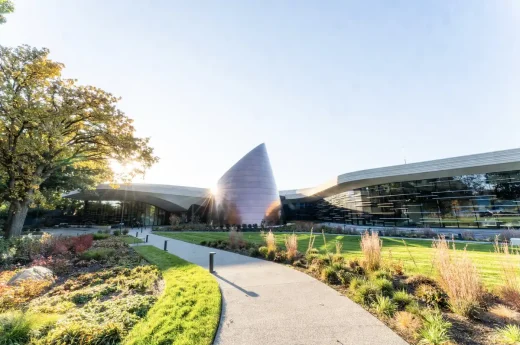
image courtesy of architects practice
Cleveland Museum of Natural History Building
Maltz Performing Arts Center
Architects: MGA Partners
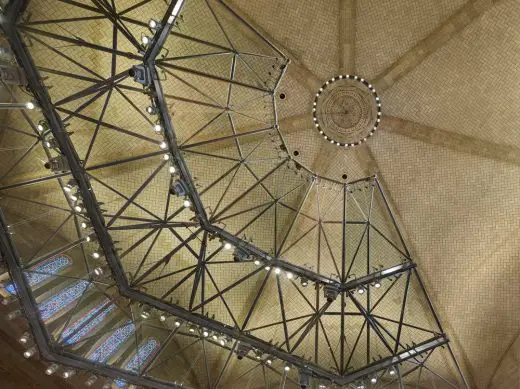
photo : Halkin | Mason Photography
Maltz Performing Arts Center in Cleveland
Reflects Folly
Architects: SILO AR+D
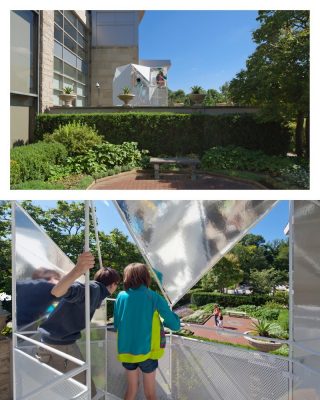
photograph : Scott Pease
Reflects Folly Cleveland Building
NASA Research Support Building
Architects: TEN Arquitectos

image courtesy of architects
NASA Research Support Building in Cleveland
Cleveland Museum of Art – Renovation + Extension
Design: Rafael Vinoly Architects
Cleveland Museum of Art
Cleveland State University Student Center
Design: Gwathmey Siegel & Associates Architects with Braun & Steidl Architects
Cleveland State University Student Center
+++
Ohio Buildings
Ohio Building Designs – key selection:
Lindner Athletic Center at the University of Cincinnati
Design: Bernard Tschumi Architects
University of Cincinnati
Great American Building, Queen City Square, Cincinnati
HOK
Great American Building
Newseum, USA
Polshek Partnership with Ralph Appelbaum Associates
Newseum
Comments / photos for the Museum of Contemporary Art Cleveland – MOCA America Architecture design by Farshid Moussavi Architects page welcome.
Website: https://www.mocacleveland.org/

